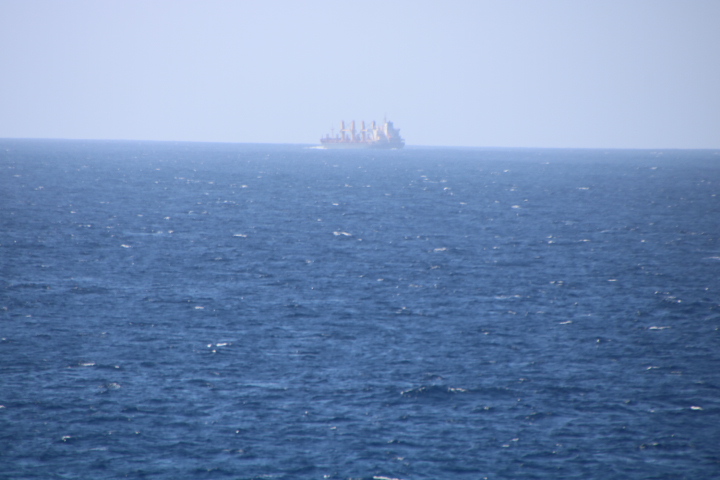Breakfast was at 08:45 and the port side of the ship was bathed in brilliant sunshine reflected from a steely grey ocean. We are now well into our Atlantic crossing and heading roughly southwest to Cape Verde having travelled 177 miles from Tenerife. We are following the route of the Navigators and Slave Traders.

Slave Trade for Atlantic – Serialisation!
History records that Bristol in the 18th century was a major centre in the Triangular Trade Routes associated with the transport of slaves from West Africa to the Caribbean and the southern USA. Then came the export of sugar cane, tobacco and other cash crops to England, followed by the onward trade of manufactured goods to Africa.
At least a century before, however, Britain was already a major player in a trans-Atlantic slave trade. Whole villages, for example, in England, Ireland, Italy, Spain and Scandinavia as well as Eastern Europe had their young and not very old transported to Africa where they were sold into slavery. In addition, the Romans, Anglo-Saxons and Vikings (Dublin was a major Viking port) had also commanded economies that were driven by slaves. By 1066 Bristol was already a centre for exporting English and Irish human cargo.
The current ‘woke’ view of slavery, the associated tearing down of statues and the protestations of Parliamentarians is clearly ill-informed.

This lack of awareness of the early engagement in slave trading has been described by historians as ‘cultural erasure’. The Berbers of North Africa were involved in a ‘reverse slave trade’ – a Muslim-led trade of ‘white’ captured Europeans into north, west and central Africa. What is not disputed, though accurate figures are difficult to come by, is the number of up to 11 million slaves that were transported to the Caribbean is difficult to under-estimate. What is not disputed, though accurate figures are difficult to come by, is the number of up to 11 million slaves that were transported to the Caribbean. This may be an under-estimate.

There is agreement among historians that the arrival in 1553 of Portuguese traders along the Gold Coast (West Africa) initiated commercial relations with the indigenous Hula people. They were fishermen and salt makers with experience of inter-regional trade and most importantly had the infrastructure to support it. The Portuguese ‘tapped’ into this. The Hula came into contact with other communities and cultures in Africa developing social, cultural, political and economic changes that later made it easier for the French to colonise the region and integrate the French language and products.
Again, the dark side of this development was the trade of enslaved people. For the Europeans, slave traders provided communication between the ‘trading companies’ and ‘factories’ (trading centres) along the Gold Coast. Here the lagoons and the employment of local canoemen supported the ‘Trade’ by providing docking facilities, systems in safe waters as well as being commanders of the so-called Middle Passage of the Triangular Trade Route.
Other African communities joined in, and as some historians suggest, started ‘Globalisation’ because of increasing connections between different places and regions of the world and because slavery was a global phenomenon – though of course it doesn’t make it right.

At 17:50 we crossed the Tropic of Cancer and are now well and truly in the Tropics!


